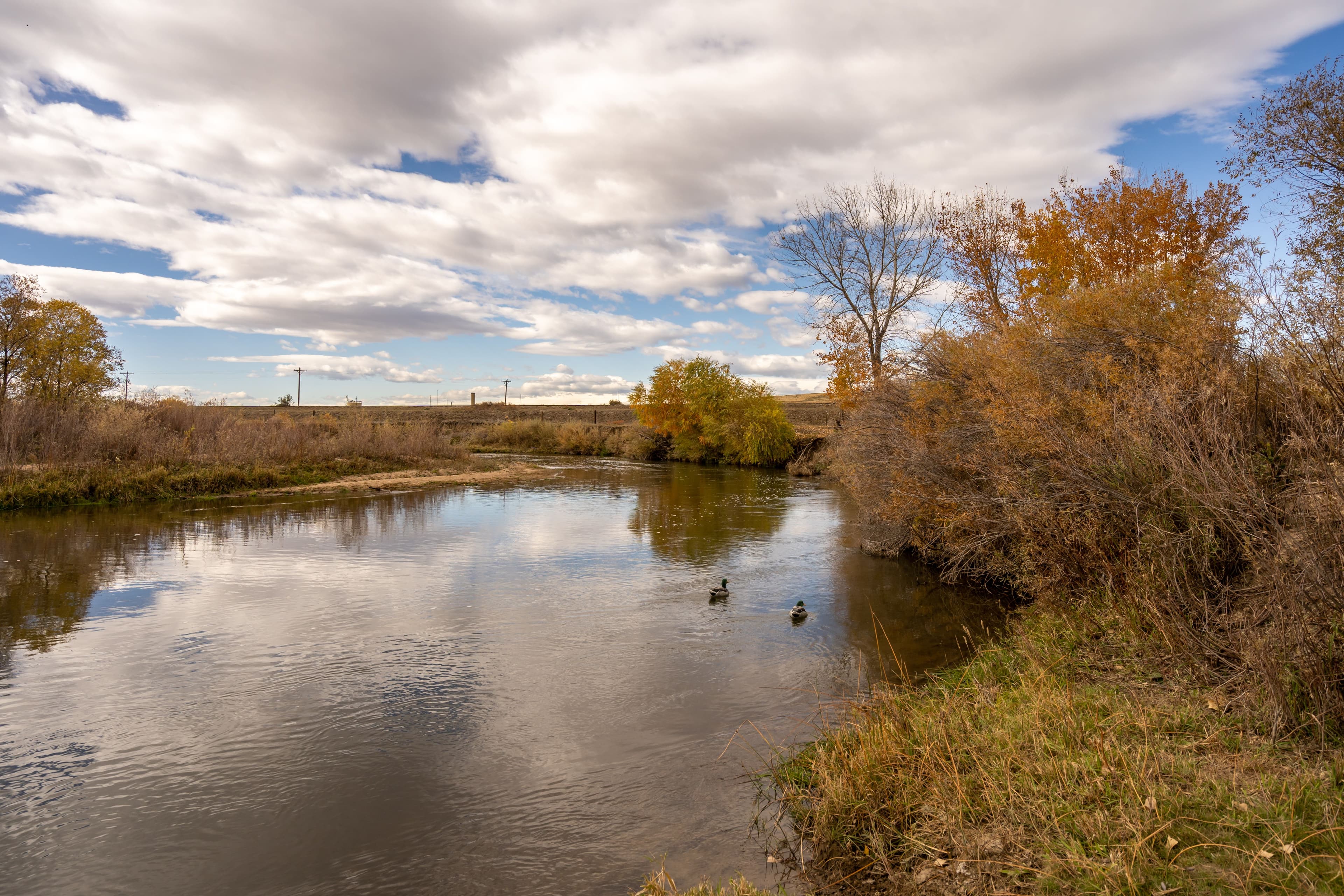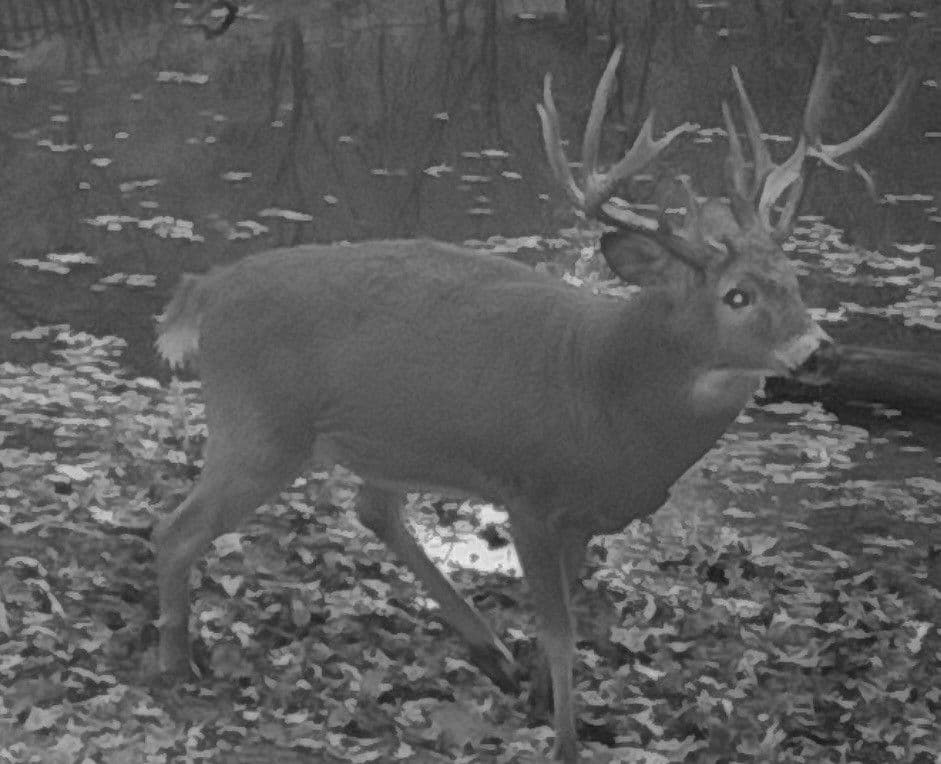Managing Habitat for Deer, Elk, and Pronghorn During Drought Conditions


Justin Hunold
07/02/2024
In the arid landscapes of the American West, water is the lifeblood of ecosystems. When the rains fail and the land dries up, the ripple effects are felt throughout the food chain, from the tiniest insects to the majestic deer, elk, and pronghorn that roam our prairies and forests. The pressing question many hunters and land managers face is, "What will happen to an ecosystem experiencing a prolonged drought?" The answer is complex, but understanding the impacts and implementing strategic habitat management can help big game animals thrive even in the harshest conditions.
The Impact of Drought on Ecosystems
Drought conditions strain an ecosystem in numerous ways. Water sources dwindle, plant growth stunts and food becomes scarce. For big game animals, this means reduced nutrition and hydration, leading to lower reproductive rates, decreased body condition, and increased mortality. As the vegetation withers, so does the habitat quality, forcing animals to move more to find sustenance, which increases their vulnerability to predators and hunters.
Strategies for Habitat Management
Water Management
The most immediate need during a drought is water. Establishing and maintaining reliable water sources can be the difference between life and death for wildlife. This can be achieved by:
Developing Water Catchments
Water catchments like guzzlers are designed to collect and store rainwater. These systems usually consist of a sloped surface that directs rainwater into a storage tank, which wildlife can then access. To maximize their use, guzzlers should be strategically placed near key habitats and migration routes. When selecting locations, consider the topography, the distance to existing water sources, and the presence of suitable habitats for big game animals. Regular maintenance is crucial to ensure these systems remain functional, especially during dry spells.
Restoring Natural Water Sources
Natural springs, seeps, and streams are vital water sources that can be rehabilitated to support wildlife. Restoration might involve:
- Removing Debris: Clearing obstructions that block water flow.
- Repairing Erosion: Stabilizing banks and channels to prevent further degradation.
- Re-digging Dried-up Springs involves excavating to reach groundwater and re-establish flow. These efforts can help rejuvenate natural water sources, providing consistent hydration for deer, elk, and pronghorn. Additionally, fencing off these areas to prevent livestock overgrazing can help maintain the integrity of the water source.
Creating Artificial Water Sources
In regions with insufficient natural water sources, constructing artificial ponds or water tanks can provide a critical lifeline. These reservoirs can be filled using solar-powered pumps that draw groundwater. To ensure their effectiveness:
- Select Durable Materials: Use weather-resistant materials to withstand harsh conditions.
- Design for Wildlife Access: Include gently sloped sides or ramps to allow animals easy access without risking entrapment.
- Monitor and Refill: Regularly check water levels and refill as necessary to ensure a constant supply.
Vegetation Management
Healthy vegetation is crucial for providing food and cover. During droughts, proactive vegetation management becomes essential:

Planting Drought-Resistant Species
Introducing plant species more tolerant of dry conditions can help sustain the food supply. Native grasses, shrubs, and forbs that withstand drought should be prioritized. These plants typically have deeper root systems that can access moisture from lower soil layers, ensuring they remain viable even in prolonged dry periods. Examples include:
- Blue Grama: A drought-resistant grass that provides excellent forage.
- Four-wing Saltbush: A hardy shrub that offers both food and cover.
- Indian Ricegrass: A resilient grass that can thrive in arid conditions.
Controlled Burns and Grazing
Using controlled burns or managed grazing to remove old, unpalatable vegetation can stimulate the growth of fresh, nutritious plants. Controlled burns should be conducted with caution, considering weather conditions, fuel load, and the presence of firebreaks to prevent uncontrolled wildfires. Managed grazing involves rotating livestock to avoid overgrazing and to promote plant diversity. Both practices help maintain healthy plant communities, providing essential forage for wildlife.
Supplemental Feeding
While not a long-term solution, supplemental feeding can help maintain animal health during severe droughts. High-quality, nutrient-rich feed should be provided in moderation to avoid dependency. Feeders should be placed where animals naturally congregate, and efforts should be made to minimize human-wildlife interactions to prevent habituation.
Habitat Enhancements
Improving the overall habitat can help big game animals cope with the stresses of drought:
Creating Shelter
Constructing shelters like brush piles or artificial cover can provide shade and protection from the elements. This is particularly important in open landscapes where natural cover is sparse. Brush piles can be created using tree limbs, brush, and other natural materials, offering immediate refuge. In more open habitats, installing shade structures made from durable, weather-resistant materials can provide critical relief from the sun.
Enhancing Riparian Areas
Riparian zones are crucial habitats, the interfaces between land and water bodies. Planting trees and shrubs along streams and rivers can provide shade, reduce evaporation, and improve water quality. These areas act as natural filters, trapping sediments and pollutants and creating a cooler, more stable environment. Species such as willows and cottonwoods are excellent choices for riparian restoration due to their rapid growth and extensive root systems.
Protecting Key Habitats
Identifying and protecting critical habitats, such as calving areas for elk or fawning grounds for deer, ensures these sensitive periods are supported even during drought. Protecting these areas involves:
- Limiting Disturbance: Reducing human and livestock activity in critical habitats.
- Enhancing Habitat Quality: Providing additional food and water sources in these areas.
- Monitoring: Using trail cameras and wildlife surveys to track animal use and adjust management practices as needed.

List of Drought-Tolerant Plants Native to the Western USA for Habitat and Wildlife Management
Grasses
Blue Grama (Bouteloua gracilis)
- A shortgrass that provides excellent forage for deer and other wildlife.
- Drought-resistant and suitable for a variety of soil types.
Buffalograss (Bouteloua dactyloides)
- A low-growing grass that thrives in dry conditions.
- Offers good ground cover and forage for wildlife.
Indian Ricegrass (Achnatherum hymenoides)
- Highly nutritious and drought-tolerant.
- It is vital for winter forage for big game animals.
Sand Dropseed (Sporobolus cryptandrus)
- A warm-season grass that provides good forage.
- Tolerates sandy and dry soils well.
Forbs
Purple Prairie Clover (Dalea purpurea)
- Provides excellent nutrition for herbivores.
- Deep-rooted and drought-resistant.
Western Yarrow (Achillea millefolium)
- It offers good forage and has medicinal properties.
- Very tolerant of dry conditions.
Showy Milkweed (Asclepias speciosa)
- It supports pollinators and offers good forage.
- Drought-tolerant and suitable for various soil types.
Prairie Coneflower (Ratibida columnifera)
- It is attractive to pollinators and provides seeds for birds.
- Deep-rooted and drought-resistant.
Shrubs
Four-wing Saltbush (Atriplex canescens)
- Provides high-protein forage for deer and pronghorn.
- Extremely drought-tolerant and adaptable to saline soils.
Big Sagebrush (Artemisia tridentata)
- Critical winter forage for deer and elk.
- Highly drought-tolerant and a critical species in western ecosystems.
Rabbitbrush (Ericameria nauseosa)
- Offers cover and forage for wildlife.
- Very drought-tolerant and often used in reclamation projects.
Serviceberry (Amelanchier alnifolia)
- It produces berries, which are a food source for many animals.
- Tolerant of dry conditions and provides excellent cover.
Trees
Ponderosa Pine (Pinus ponderosa)
- Provides cover and seeds for wildlife.
- Tolerant of dry, rocky soils and a wide range of elevations.
Western Juniper (Juniperus occidentalis)
- Offers berries for birds and cover for wildlife.
- Extremely drought-tolerant and adaptable.
Fremont Cottonwood (Populus fremontii)
- Provides important riparian habitat.
- Tolerates dry conditions if planted near intermittent water sources.
Drought is a stark reminder of the delicate balance within ecosystems. As stewards of the land, we are responsible for implementing strategies that help maintain this balance, ensuring that the wildlife we cherish can endure and flourish, no matter the conditions.
Incorporating these drought-tolerant native plants into your habitat management plan can significantly enhance the resilience of your hunting property during dry conditions. These plants provide critical forage and cover for wildlife and help maintain the ecological balance necessary for a thriving ecosystem. By focusing on species well-adapted to the western USA's arid environments, you can create a sustainable and productive habitat for deer, elk, pronghorn, and other wildlife.
Monitoring and Adaptation
Effective habitat management during drought requires constant monitoring and the flexibility to adapt strategies as conditions change. Using trail cameras, wildlife surveys, and remote sensing technology can provide valuable data on animal movements, water usage, and vegetation health. This information allows for timely adjustments to management practices, ensuring that interventions remain effective.
Conclusion
Prolonged droughts pose significant challenges to ecosystems and the wildlife that inhabit them. However, thoughtful and proactive habitat management can mitigate some of the harshest impacts and support the resilience of deer, elk, and pronghorn populations. By focusing on water management, vegetation health, and habitat enhancements, we can create a lifeline for these animals, ensuring they thrive even when the rains fail.